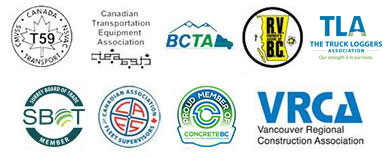
Why Regular Brake Inspections Matter
Routine brake inspections are essential for ensuring the safety and reliability of your vehicle. Over time, brake components like pads, rotors, and fluid can wear down or become contaminated, compromising their effectiveness. Without proper inspection, minor issues can escalate into major safety hazards, leading to longer stopping distances, reduced control, or even brake failure. Routine checks also help identify potential problems early, which can save you from costly repairs and prevent accidents. By prioritizing brake inspections, you not only extend the life of your braking system but also protect yourself and others on the road.
In general, a commercial vehicle’s air brake system should undergo a visual inspection at least every three months, with more detailed inspections performed based on the specific application and manufacturer guidelines. For line haul tractors, this typically includes a comprehensive inspection every six months or after 100,000 miles, whichever comes first. In on-highway line haul operations, inspections may be required every four months, especially when brake seals are replaced or the brakes are relined.
Key Components to Check During Brake Inspections
During a brake inspection, several key components should be checked to ensure the system functions properly. Regular checks of these areas can prevent costly and dangerous brake system failures down the road:
Brake Pads:
These are some of the most common worn down areas. Inspecting the thickness of the brake pads helps determine if they need to be replaced. Worn pads can reduce braking efficiency and cause damage to other components.
Brake Rotors:
Rotors are checked for grooves, cracks, or uneven wear. Warped or damaged rotors can cause vibrations, reduced stopping power, and excessive brake pad wear.
Brake Fluid:
Brake fluid should be at the proper level and free of contaminants. Old or low fluid can lead to poor braking performance and potentially cause brake failure. It should also be checked for moisture, which can cause corrosion in the system.
Brake Lines and Hoses:
Inspect for leaks, cracks, or signs of wear. Damaged brake lines can lead to a loss of brake fluid and a complete failure of the braking system.
Brake Shoes (for drum brakes):
If your vehicle has drum brakes, then the condition of the brake shoes should be inspected. Like brake pads, they can wear down over time and should be replaced when necessary.
ABS (Anti-lock Braking System) Sensors:
For vehicles equipped with ABS, the sensors should be inspected for dirt, damage, or misalignment, as these can affect the system’s ability to prevent wheel lockup during emergency braking.
We’re Qualified for Commercial Vehicle Inspections

These inspections are designed to ensure that all vehicles meet safety standards and are operating at their best, reducing the risk of accidents and costly breakdowns. They typically cover key components like brakes, tires, lights, steering, and suspension, along with other vital systems. Regular inspections not only help identify potential issues before they become major problems but also keep businesses compliant with government regulations. For fleet managers, staying on top of these inspections is an investment in the longevity of their vehicles and the safety of their drivers on the road.
Schedule Regular Brake Inspections for Your Fleet
Ensuring that your commercial vehicle’s brakes are in top condition is not just a matter of compliance—it’s a matter of safety. Regular inspections and maintenance help prevent costly repairs, reduce downtime, and most importantly, protect your drivers and the public.
Since 1959, Vancouver Axle & Frame in Surrey, BC has strived to be the number one alignment and suspension specialist in the Lower Mainland and Fraser Valley. By staying proactive with brake checks and vehicle inspections, you’re investing in the longevity of your fleet and contributing to safer roads. We would be happy to answer any questions or concerns that you might have.
Contact Vanaxle today to schedule an inspection!







